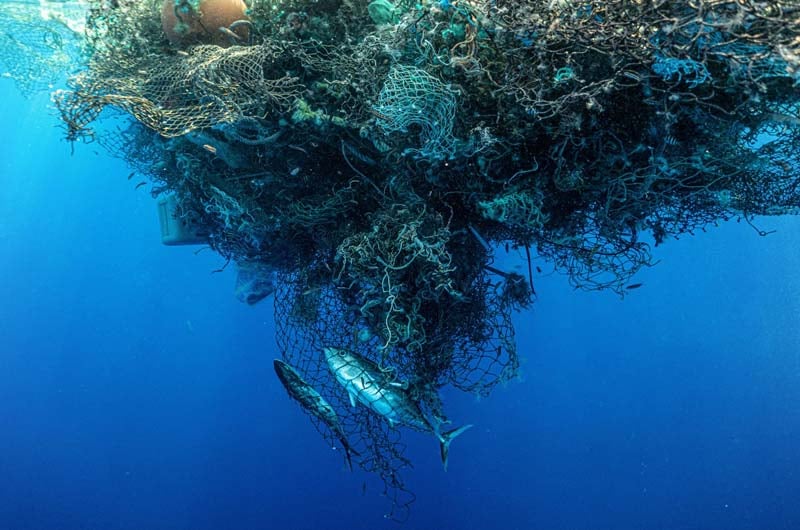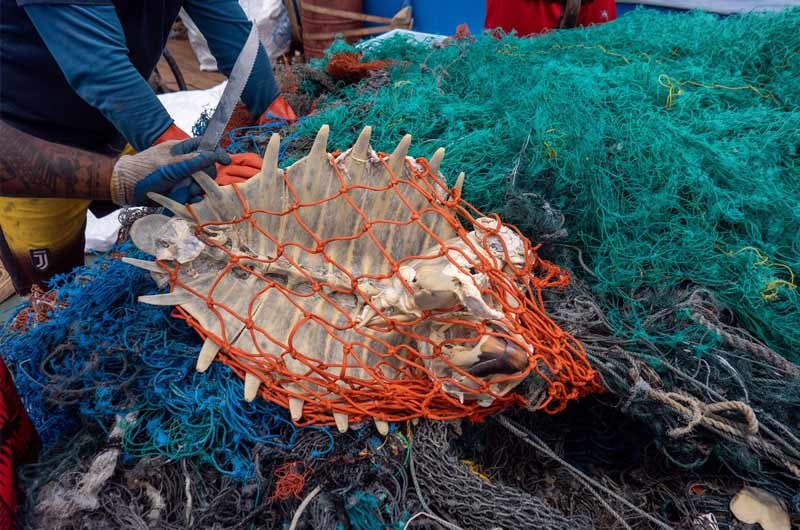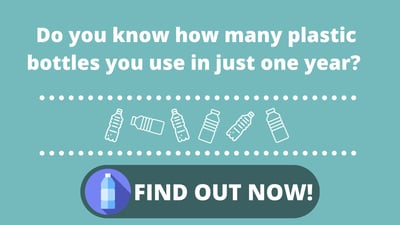Laica Blog
Plastic islands – what they are and how not to feed them
Plastic islands are large areas of our oceans where large amounts of plastic have accumulated over time, threatening the ecosystem and the health of our seas.
Plastic islands – what are they?

Plastic islands (or Plastic Vortex) are areas located in our oceans where large amounts of waste have accumulated over time, especially plastic, but also light metals and decomposing organic residues, due to the disposal of waste at sea and environmental disasters.
Ocean currents have funnelled the plastic they encounter on their way into particular areas of the ocean, and they continue to increase in size day by day.
These so-called 'garbage islands' do not have precisely defined physical boundaries and can vary in both size and location.
As the plastic is drawn together by currents in a circular pattern, these plastic clusters create semi-permanent eddies. Despite their mobility, these islands are so large that they are considered a stable substrate in the ecosystem and are, therefore, acceptable for colonisation by certain animal species.
Plastic islands – how big are they?
Plastic islands have been reported by sailors and fishermen, but no one knows exactly what surface area they occupy or how big they actually are, which is why they are the subject of observation and study by various associations and NGOs, such as Project Kaisei, an Ocean Voyages Institute initiative aimed at cleaning up the Oceans and dismantling the Great Pacific Garbage Patch, one of the main plastic islands present in our Oceans today.
However, these are immense regions – in fact, it is estimated that the largest of the plastic islands that we know about so far, the Great Pacific Garbage Patch, which is situated in the Pacific Ocean between California and the Hawaiian Archipelago, is approximately the size of the entire surface area of Canada.
How many plastic islands are there in the world?
At the moment, the main plastic islands that have been recognised are the following:
1. Sargasso Sea Garbage Patch
A Greenpeace expedition discovered this island in the Sargasso Sea, which is located in the Atlantic Ocean off Florida, between the Antilles and the Azores.
2. Artic Garbage Patch
This island is located in the Barents Sea near the Arctic Circle. At the moment, it is the smallest.
3. Indian Ocean Garbage Patch
Reported since the late 1980s, this island is located in the Indian Ocean.
4. South Atlantic Garbage Patch
One of the smallest, located between South America and southern Africa – there is not much study material on it yet.
5. North Atlantic Garbage Patch
It is the second-largest island and is located in the North Atlantic Ocean.
6. South Pacific Garbage Patch
Discovered off the coast of Chile and Peru, it is one of the largest plastic islands in the world. Calculating its size is complicated and complex, but it is already estimated to be larger than Italy.
7. Great Pacific Garbage Patch
It is located in the Pacific Ocean between California and the Hawaiian Archipelago. It is over 60 years old and is the largest garbage island in the world.
What are the implications of plastic islands?

The reason why the open sea is generally less populated is the absence of food and shelter for marine species. The plastic islands that have been created, especially since the 1980s, have provided a potential breeding ground for many animal species that have found semi-permanent habitats here in which to live. What are the implications of these new ecosystems in our seas?
They threaten health and kill marine animals
As can be easily imagined, this material is very harmful to marine fauna, which ingest it as food. Moreover, animals can get stuck inside such waste without being able to free themselves.
Plastic enters the food chain
Through the ingestion of plastic by marine animals, it enters the food chain, threatening not only the health of animals in the first place but also, by extension, our own.
New species are emerging
A study published in Nature Communications has uncovered evidence of the formation of 'neopelagic communities' within the Great Pacific Garbage Patch. These are species that, up to now, had always lived in coastal areas and had never been able to survive in the open sea, but which have apparently evolved to live on floating objects.
According to a study conducted by the Ocean Voyages Institute, 90% of the samples analysed were animals and plants, such as anemones, marine microorganisms, crabs and molluscs that have found a new habitat no longer on the coast but within these islands created by waste.
The scientific community still has many questions to answer, including what would happen if these new species were to be brought to the mainland. Would they pose a threat to native species? Would they be harmful to pre-existing ecosystems?
Plastic islands are constantly being studied and more, and more information will be collected over time.
What can we do to limit the impact of plastic islands?

According to WWF estimates, at least 8 million tons of plastic are released into the oceans each year. If this is not reversed, the total waste dispersed in the environment will reach approximately 12 million tonnes by 2050.
As consumers, what can we do to minimise our impact on ocean health?
Donate to NGOs and associations involved in protecting the seas
The resources these organisations need to effectively protect the environment are endless, so we can mindfully make timely or periodic donations to support them. In 2020, the Ocean Voyages Institute set a record for ocean cleanup, collecting 103 tonnes of plastic waste from the Pacific plastic island during a 48-day expedition. Find details here.
Reduce our consumption of disposable plastic
Disposable plastic is a real scourge on our seas. Let's reduce our consumption of plastic bottles, plates and cutlery, let's fill our plastic containers whenever possible with products we buy loose, let's opt for other materials whenever possible and let's find new uses for plastic in the home.
Raising awareness of the issue
We can become the voice of the oceans and raise awareness about the environmental impact of a lifestyle that could become more sustainable with a few steps.







It's your turn, leave your comment!
Get the latest from the Laica blog